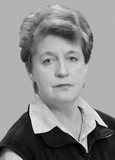The physical and biological constraints that hinder the development of physical abilities and energy reserves in elite kayakers and canoeists
Ключевые слова:
morphological and biochemical composition of blood, highly skilled canoeists and kayakers, training process, negative changes, detection rate.Аннотация
Objective of the study was to investigation of medical and biological factors that could impede the enhancement of the training performance among elite kayakers and canoeists.
Methods and structure of the study. The results of 18 series of own monitoring of the current functional state of highly skilled kayakers and canoers over six years (2019-2024) are summarized. In total, 43 male rowers aged 18 to 36 years (5 HMS, 8 MSIC, 27 MS, 3 CMS) and 23 female rowers aged 18 to 33 years (2 HMS, 4 MSIC, 15 MS, 2 CMS) took part in the research. Current changes in the morphological, protein and biochemical composition of blood were analyzed (antistreptolysin-O content, hemoglobin concentration, total protein content, albumin concentration, glucose, lymphocyte content at leukocyte levels from 4,5 to 7,5*109/l, hemodynamic parameters and electrocardiogram (total number of records 1360), criteria for the functional state of the autonomic nervous system, as well as sleep disorders according to a simplified scheme of the SAN questionnaire (assessment of athletes on a 5-point scale of sleep status, appetite and desire to train).
Results and conclusions. It was discovered that a significant number of athletes in the selected group experienced negative shifts in their parameters, with these shifts occurring in 20 to 80% of measurements. These shifts were often associated with underlying conditions such as chronic infections, central nervous system fatigue, pre-anemic states, protein deficiencies, and more.
Therefore, to address the issue of personalizing and enhancing the training process for elite kayakers and canoeists, it is crucial to identify and address their individual medical and biological risk factors.
Библиографические ссылки
Al-Bukai M.Kh. Fiziologo-biomekhanicheskiye faktory, obuslovlivayushchiye gipertonus myshts u sportsmenov. PhD diss. abstract. Krasnodar, 2004. 20 p.
Butchenko L.A., Butchenko V.L. Varianty normy segmenta RS-T elektrokardiogrammy sportsmena. Teoriya i praktika fizicheskoy kultury. 1984. No. 11. pp. 40-42.
Garkavi L.Kh., Kvakina E.B., Ukolova M.A. Adaptatsionnyye reaktsii i rezistentnost organizma. Rostov-on-Don, 1990. 223 p.
Grishina Zh.V., Makarova G.A., Chernukha S.M. et al. Osobyy podkhod k analizu i otsenke sostava krasnoy krovi u sportsmenov (na primere grebli na baydarkakh i kanoe). Sportivnaya meditsina: nauka i praktika. 2021. No. 4. pp. 26-32.
Kalinin A.N. Osobennosti morfologicheskogo i belkovogo sostava krovi u vysokokvalifitsirovannykh sportsmenov, spetsializiruyushchikhsya v greble na baydarkakh i kanoe. PhD diss. Krasnodar: KGUFKST publ., 2008. 115 p.
Karpov A.A., Makarova G.A., Pogrebnoy A.I. et al. Problema informativnoy tsennosti traditsionnogo kompleksa biokhimicheskikh kriteriyev, registriruyemykh v ramkakh tekushchego kontrolya za sportsmenami vysshey kvalifikatsii. Vestnik sportivnoy nauki. 2019. No. 5. pp. 72-78.
Komarova T.K. Funktsionalnoye sostoyaniye sistemy pishchevareniya u sportsmenov: faktory riska i skrytaya patologiya. Fiziologiya i sportivnaya meditsina. 2009. No. 4. pp. 50-52.
Kots Ya.M. Krov (gemoglobin i myshechnaya rabotosposobnost). Guidelines. Moscow, 1980. 35 p.
Makarova G.A., Grishina Zh.V., Chernukha S.M. et al. Tsentilnyye gradatsii morfologicheskikh i biokhimicheskikh pokazateley krovi: osobyye podkhody k analizu i otsenke. Lechebnaya fizkultura i sportivnaya meditsina. 2020. No. 1. pp. 14-21.
Makarova G.A., Vinogradov M.A., Deshin R.G. et al. Vrachu sportivnoy komandy: otdelnyye aspekty professionalnoy deyatelnosti. Moscow: Sport publ., 2024. 288 p.
Makarova G.A., Avdeeva M.G., Bezuglov E.N. et al. Osnovy mediko-biologicheskogo obespecheniya podgotovki sportsmenov. Handbook of the trainer. Moscow: Printleto publ., 2022. 512 p.
Makarova G.A., Loktev S.A. Kartina krovi i funktsionalnoye sostoyaniye organizma sportsmenov. Krasnodar, 1990. 125 p.
Mints E.I. Fiziologo-biomekhanicheskiy analiz funktsionalnogo sostoyaniya oporno-dvigatelnogo apparata u sportsmenov. PhD diss. Krasnodar: KGUFKST publ., 2000. 170 p.
Profilaktika streptokokkovoy (gruppy A) infektsii. Clinical guidelines. Moscow: Ministerstvo zdravookhraneniya Rossiyskoy Federatsii publ., 2013. 41 p.
Kholyavko Yu.A. Funktsionalnoye sostoyaniye sistemy mochevydeleniya u sportsmenov vysokoy kvalifikatsii, spetsializiruyushchikhsya v greble na baydarkakh i kanoe. PhD diss. Krasnodar: KGUFKST publ., 2006. 115 p.
Petibois C., Cazorla G., Poortmans J-R., Deleris G. Biochemical Aspects of Overtraining in Endurance Sports. A Review. Sports Med. 2002. No. 32 (13). pp. 867-878.

Дополнительные файлы
Опубликован
Как цитировать
Выпуск
Раздел
Лицензия
Copyright (c) 2025 Theory and Practice of Physical Culture

Это произведение доступно по лицензии Creative Commons «Attribution» («Атрибуция») 4.0 Всемирная.
